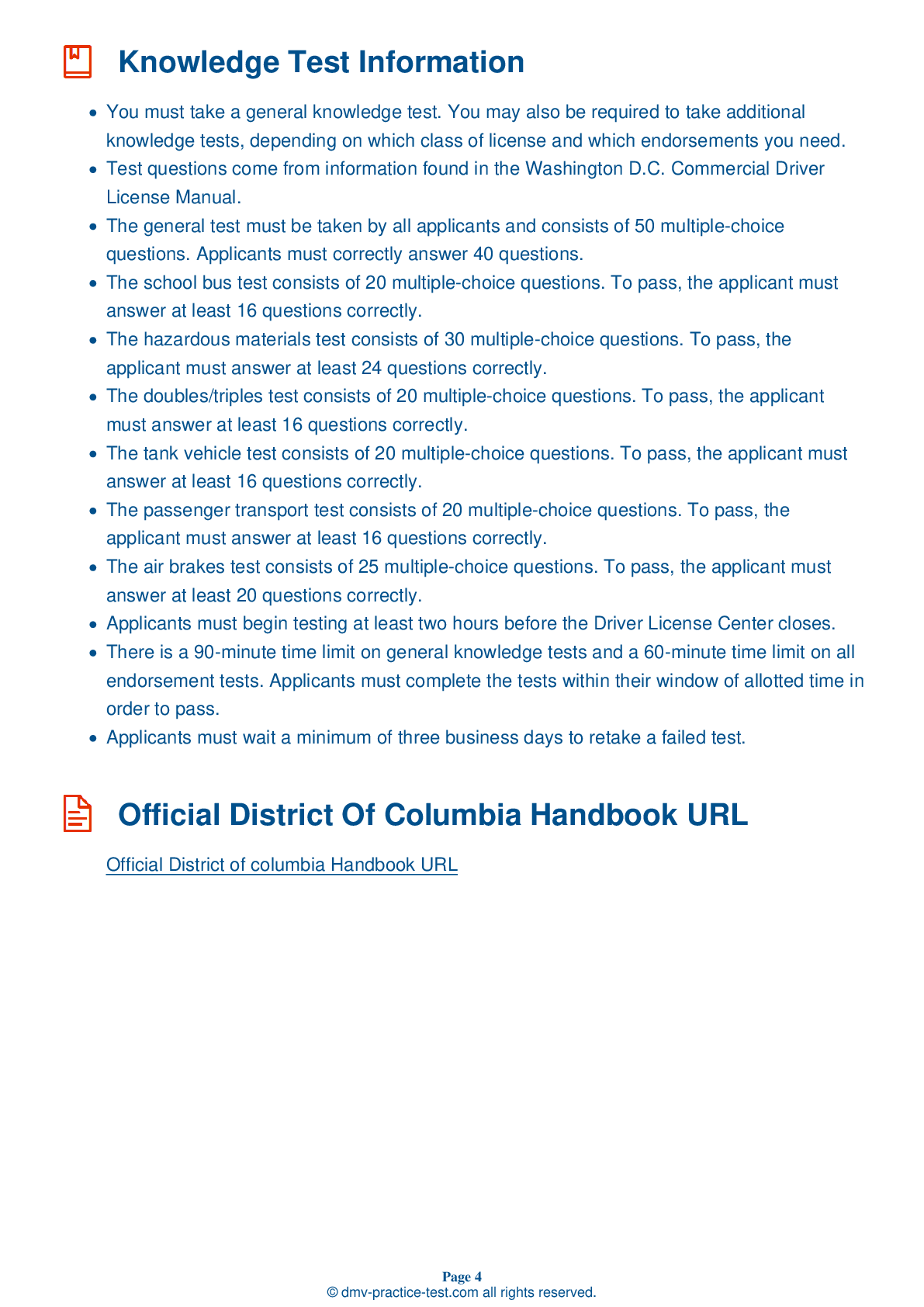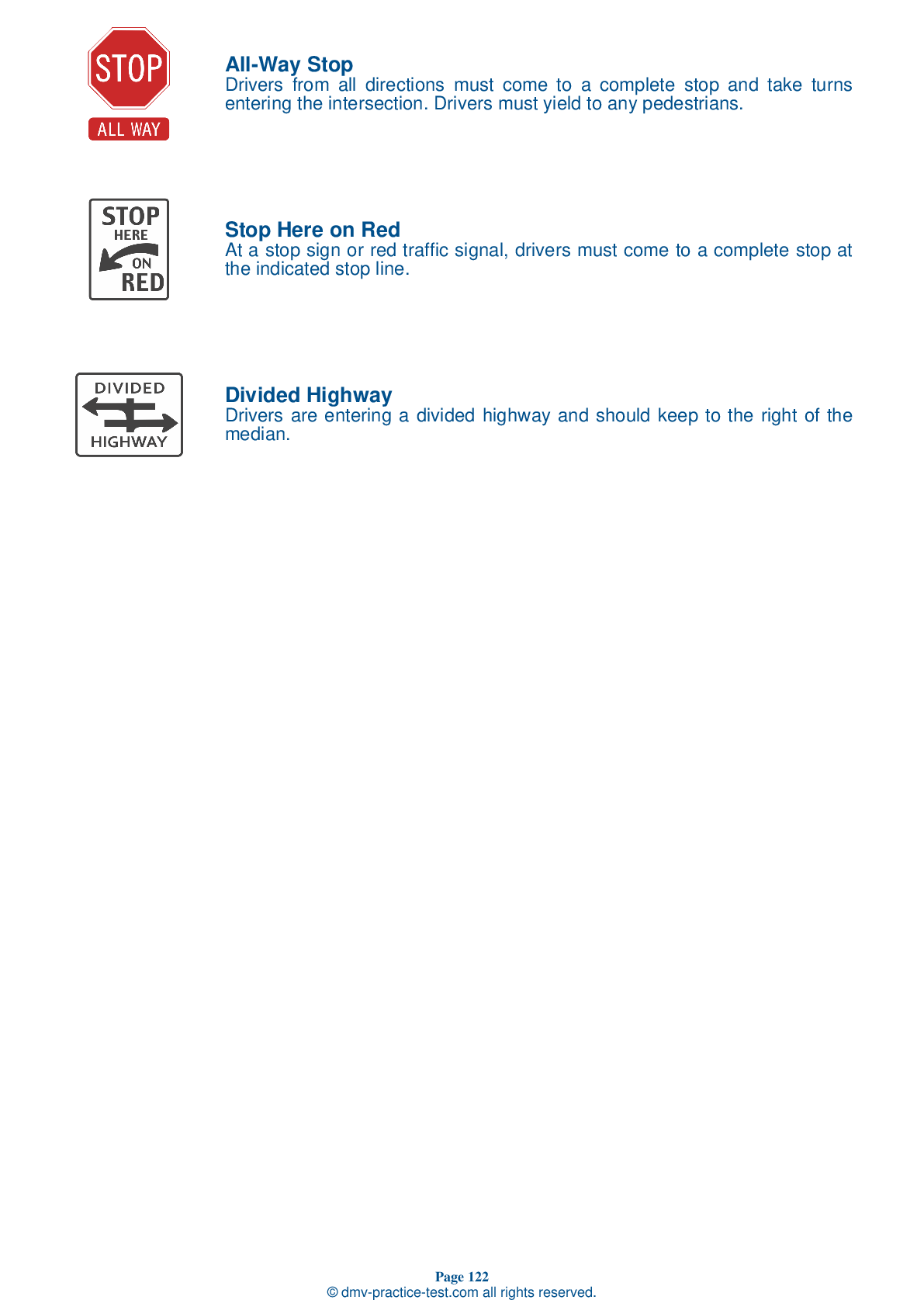FREE District of Columbia CDL Practice Test 2024 - DMV Practice Test Page 2 of 7
The gross domestic product (GDP) of Washington, D.C. is $99 billion per year, despite its small size of 68 square miles. More than 2,100 times the size of the state. Without commercial drivers to transport goods and products in and out of the district, such a big GDP would be impossible to achieve — which is where you come in. This practice quiz will assist you in obtaining or renewing your commercial driver's license (CDL) by providing realistic practice for the CDL written exam. These 50 multiple-choice questions include key knowledge from the Commercial Driver License Manual in Washington, D.C., as well as federal and local laws. Right-of-way rules, braking and shifting tactics, driving in adverse weather and road conditions, handling emergency situations, and more will all be put to the test. To ensure that you can correctly answer future questions, use the suggestion supplied with each question and read the explanations attentively. Return and practice until you are confident in your understanding of the material.



